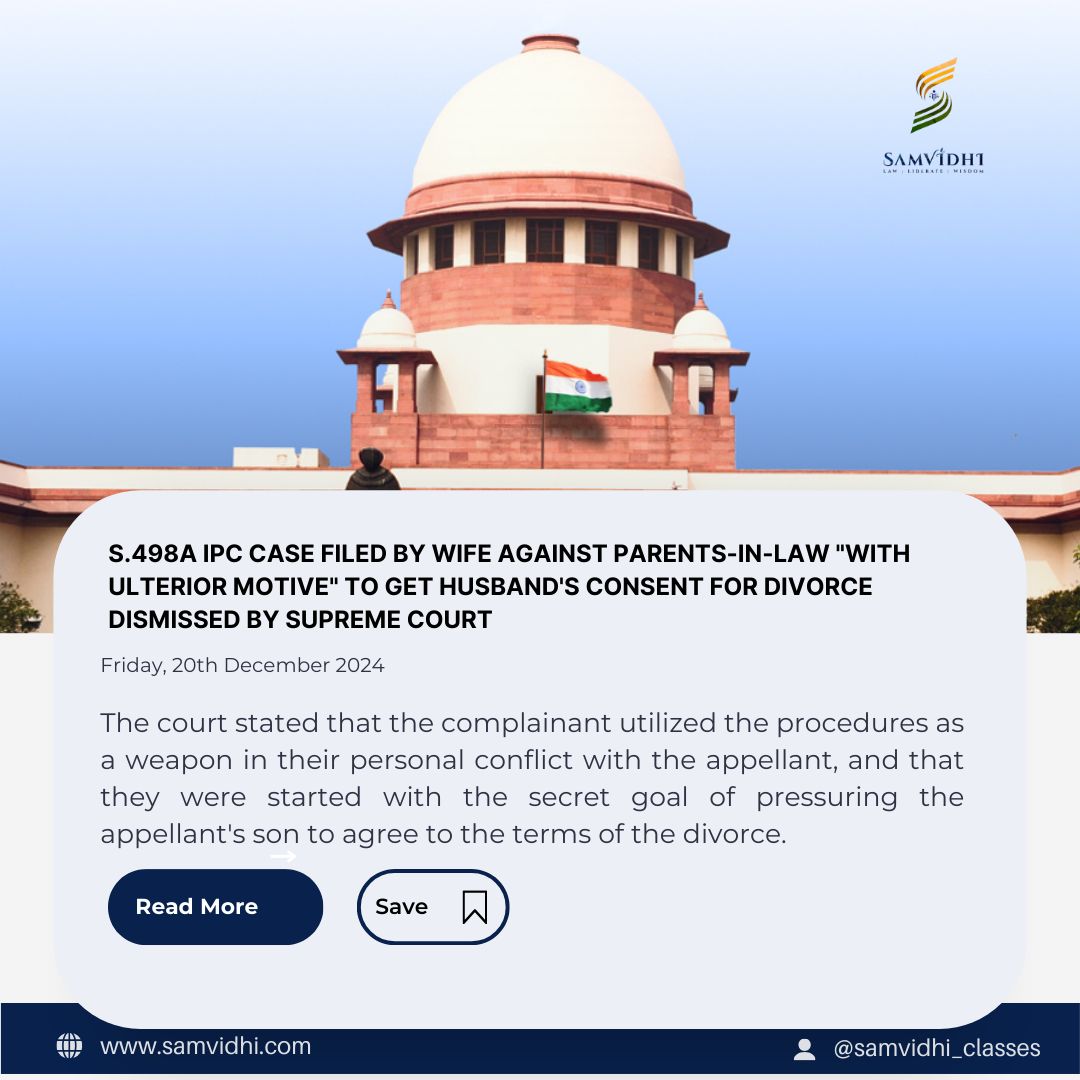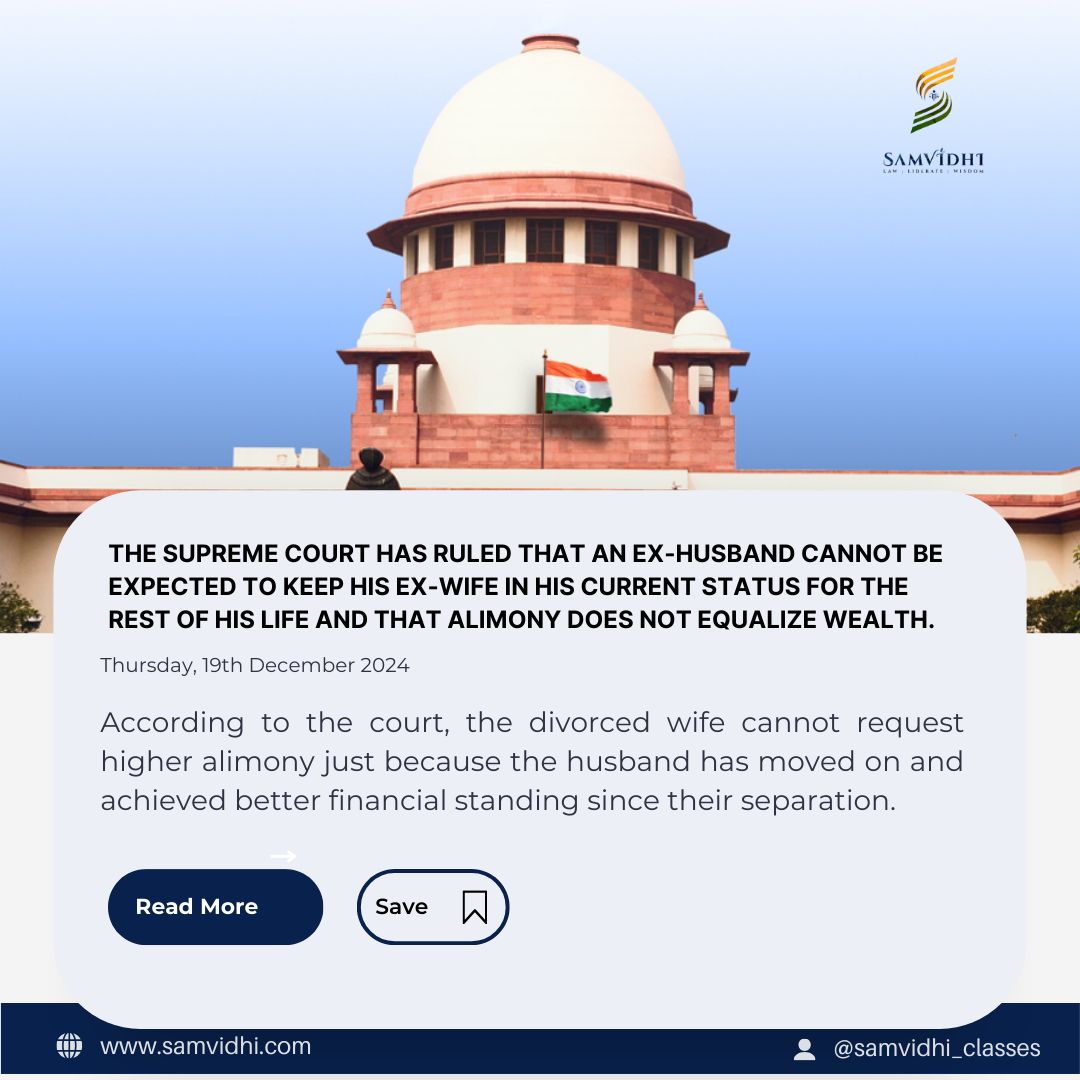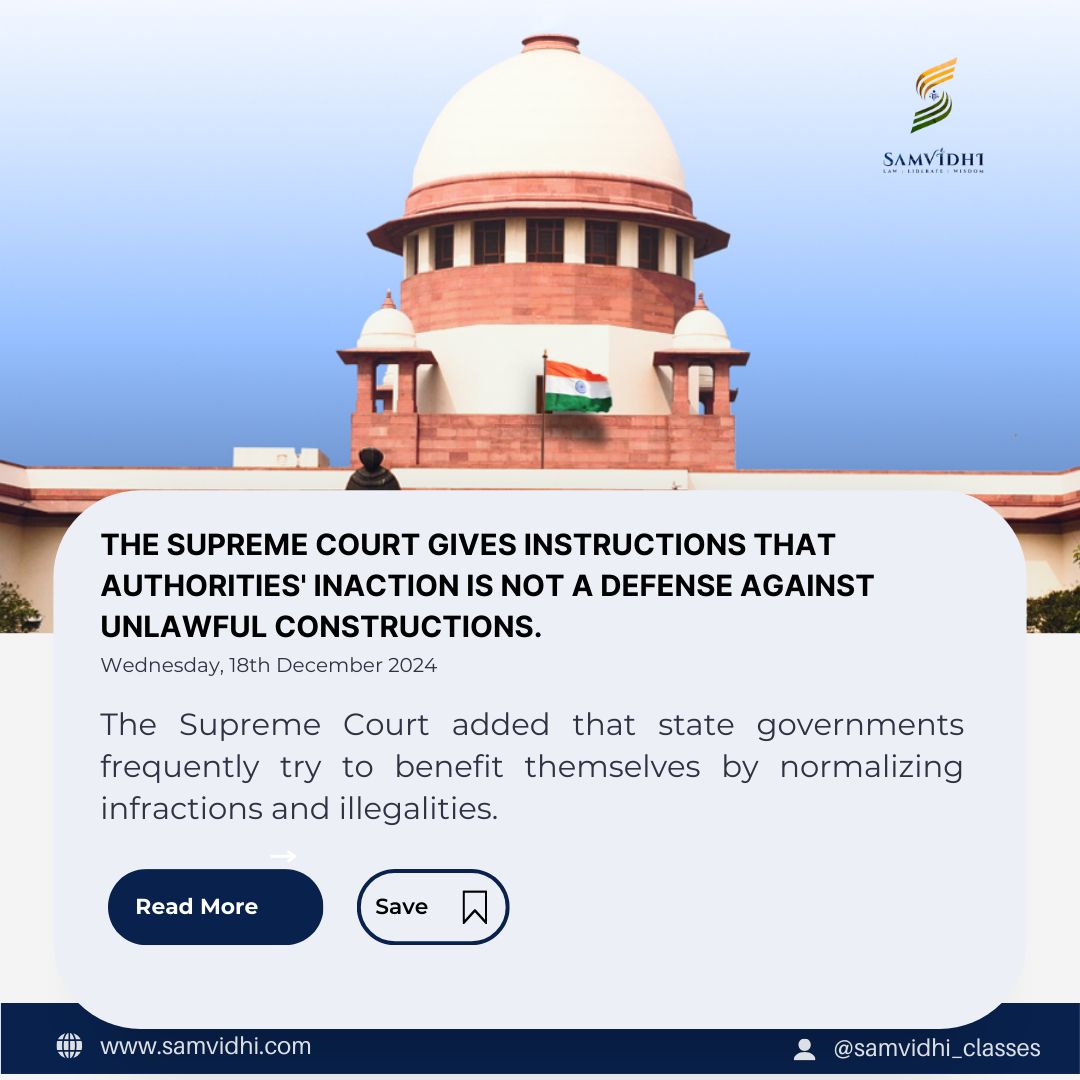On Tuesday, the Supreme Court ruled that official action against unlawful constructions cannot be delayed or slack, as this cannot serve as a defense against future illegalities.The statement was made by a bench of Justices JB Pardiwala and R Mahadevan in a case involving the construction of a business space on a residential land in Meerut, Uttar Pradesh. “Delay in directing rectification of illegalities, administrative failure, regulatory inefficiency, cost of construction and investment, negligence and laxity on the part of the authorities concerned in performing their obligation(s) under the Act [U.P. Avas Evam Vikas Parishad Adhiniyam], cannot be used as a shield to defend action taken against the illegal/unauthorized constructions,” the Supreme Court stated.
It further emphasized that it is not acceptable to support construction that deviates from the local government-approved building plan or boldly goes on without one. The Court emphasized that every single construction must be made meticulously and properly in accordance with the Rules. “In the event of any violation being brought to the notice of the Courts, it has to be curtailed with iron hands and any lenience afforded to them would amount to showing misplaced sympathy,” the Court stated.
The Supreme Court added that state governments frequently try to benefit themselves by normalizing infractions and illegalities. It claimed that the State is unaware that this benefit pales in comparison to the irreparable harm to the environment and long-term harm to orderly urban development. “Hence, regularization schemes must be brought out only in exceptional circumstances and as a onetime measure for residential houses after a detailed survey and considering the nature of land, fertility, usage, impact on the environment, availability and distribution of resources, proximity to water bodies/rivers and larger public interest,” the Supreme Court stated.
In this context, the Court further emphasized that unauthorized buildings affect resources like electricity, ground water, and road access in addition to endangering the lives of the residents and the local population. Therefore, it emphasized that the master plan or zonal development must be developed with the broader public and environmental interests in mind, rather than being solely focused on the individual.
“Violations of this type would go unnoticed and increase in frequency unless the administration is streamlined and those tasked with carrying out the act are held responsible for their failure to fulfill their statutory tasks. The Court stated that if the officials are allowed to get away with it, they would get more confident and will keep ignoring the illegalities that lead to the failure of all planned projects, pollution, chaotic traffic, security threats, etc.
Given the significance of the matter, the Court issued numerous directives:
(i) The builder or applicant, as the case may be, must provide an undertaking when granting building planning permission that the building will only be turned over to the owners or beneficiaries upon receiving a completion/occupation certificate from the relevant authorities.
(ii) During the whole construction time, the builder, developer, or owner must have a copy of the approved plan posted at the construction site. The relevant authorities must also conduct periodic inspections of the site and keep a record of these inspections in their official records.
(iii) The authority in charge will issue the completion/occupation certificate for the residential or commercial building to the parties involved without undue delay after conducting a personal inspection and confirming that the building is constructed in compliance with the building planning permission granted and that there is no deviation in such construction in any way.
(iv) Only once the completion/occupation certificate is produced would the service provider or Board provide the buildings the required service connections, including electricity, water supply, sewerage connection, etc.
(v) Even after the completion certificate has been issued, if any deviation or violation of the planning permission is brought to the attention of the authority, the authority in question must take immediate legal action against the builder, owner, or occupant; the official who issued the erroneous completion or occupation certificate will be dealt with departmentally right away.
(vi) Regardless of whether it is a residential or commercial building, no authority, including local bodies of States or Union Territories, may grant permission or a license to conduct any business or trade in an unlawful building.
(vii) The development shall adhere to the zonal usage and plan. Any changes to this zonal plan and usage must be made while closely adhering to existing regulations, taking into account the environment’s impact and the general public’s interest.
(viii) In the event that the planning department or local body’s relevant authority requests assistance from another department to take action against any unauthorized construction, the latter must provide prompt assistance and cooperation; any failure to do so will be taken seriously. Once the wrongdoing authorities are discovered, the States/UT must also take disciplinary action against them.
(ix) Only after validating the completion/occupation certificate provided to a building upon production of the same by the parties involved would banks or other financial institutions approve a loan against any building as collateral.
(x) In addition to prosecution under the applicable laws, contempt procedures would be initiated for violating any of the directives.
To allow judges to take it into consideration when resolving disputes involving unapproved structures or building permission violations, the Court directed its Registrar (Judicial) to distribute a copy of its ruling to the Registrar General of each High Court.
Additionally, a copy of this judgment must be distributed to the chief secretaries of each state and union territory by the Registrar (Judicial). The top court mandated that all State and UT governments send circulars to all local authorities and corporations, alerting them to the directives of this court and urging strict adherence to them. The highest court in this instance, meantime, maintained the Allahabad High Court’s ruling to abstain from becoming involved in the destruction of unpermitted buildings.




